Aromatic Amino Acid-Derived Compounds Induce Morphological Changes and Modulate the Cell Growth of Wine Yeast Species
- PMID: 29696002
- PMCID: PMC5904269
- DOI: 10.3389/fmicb.2018.00670
Aromatic Amino Acid-Derived Compounds Induce Morphological Changes and Modulate the Cell Growth of Wine Yeast Species
Abstract
Yeasts secrete a large diversity of compounds during alcoholic fermentation, which affect growth rates and developmental processes, like filamentous growth. Several compounds are produced during aromatic amino acid metabolism, including aromatic alcohols, serotonin, melatonin, and tryptamine. We evaluated the effects of these compounds on growth parameters in 16 different wine yeasts, including non-Saccharomyces wine strains, for which the effects of these compounds have not been well-defined. Serotonin, tryptamine, and tryptophol negatively influenced yeast growth, whereas phenylethanol and tyrosol specifically affected non-Saccharomyces strains. The effects of the aromatic alcohols were observed at concentrations commonly found in wines, suggesting a possible role in microbial interaction during wine fermentation. Additionally, we demonstrated that aromatic alcohols and ethanol are able to affect invasive and pseudohyphal growth in a manner dependent on nutrient availability. Some of these compounds showed strain-specific effects. These findings add to the understanding of the fermentation process and illustrate the diversity of metabolic communication that may occur among related species during metabolic processes.
Keywords: aromatic alcohols; invasive growth; non-Saccharomyces; pseudohyphal growth; quorum sensing; serotonin; tryptamine.
Figures
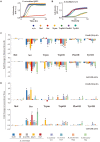


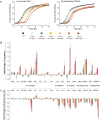
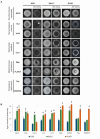
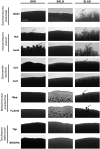

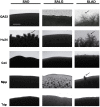
Similar articles
-
The production of aromatic alcohols in non-Saccharomyces wine yeast is modulated by nutrient availability.Food Microbiol. 2018 Sep;74:64-74. doi: 10.1016/j.fm.2018.03.003. Epub 2018 Mar 8. Food Microbiol. 2018. PMID: 29706339
-
Effects of melatonin and tryptophol addition on fermentations carried out by Saccharomyces cerevisiae and non-Saccharomyces yeast species under different nitrogen conditions.Int J Food Microbiol. 2019 Jan 16;289:174-181. doi: 10.1016/j.ijfoodmicro.2018.09.013. Epub 2018 Sep 17. Int J Food Microbiol. 2019. PMID: 30253310
-
Monitoring of quorum-sensing molecules during minifermentation studies in wine yeast.J Agric Food Chem. 2013 Mar 13;61(10):2496-505. doi: 10.1021/jf3051363. Epub 2013 Mar 5. J Agric Food Chem. 2013. PMID: 23413824
-
Quorum-sensing in yeast and its potential in wine making.Appl Microbiol Biotechnol. 2016 Sep;100(18):7841-52. doi: 10.1007/s00253-016-7758-3. Epub 2016 Aug 9. Appl Microbiol Biotechnol. 2016. PMID: 27507587 Review.
-
Yeast interactions and wine flavour.Int J Food Microbiol. 2003 Sep 1;86(1-2):11-22. doi: 10.1016/s0168-1605(03)00245-9. Int J Food Microbiol. 2003. PMID: 12892919 Review.
Cited by
-
Proteomic characterization of extracellular vesicles produced by several wine yeast species.Microb Biotechnol. 2020 Sep;13(5):1581-1596. doi: 10.1111/1751-7915.13614. Epub 2020 Jun 23. Microb Biotechnol. 2020. PMID: 32578397 Free PMC article.
-
Comparison between Metschnikowia pulcherrima and Torulaspora delbrueckii used in sequential wine fermentations with Saccharomyces cerevisiae.Front Microbiol. 2025 Jul 2;16:1590561. doi: 10.3389/fmicb.2025.1590561. eCollection 2025. Front Microbiol. 2025. PMID: 40673155 Free PMC article.
-
Transcriptomic Insights into the Effect of Melatonin in Saccharomyces cerevisiae in the Presence and Absence of Oxidative Stress.Antioxidants (Basel). 2020 Oct 1;9(10):947. doi: 10.3390/antiox9100947. Antioxidants (Basel). 2020. PMID: 33019712 Free PMC article.
-
Using off-gas for insights through online monitoring of ethanol and baker's yeast volatilome using SESI-Orbitrap MS.Sci Rep. 2022 Jul 21;12(1):12462. doi: 10.1038/s41598-022-16554-z. Sci Rep. 2022. PMID: 35864195 Free PMC article.
-
Variation in Filamentous Growth and Response to Quorum-Sensing Compounds in Environmental Isolates of Saccharomyces cerevisiae.G3 (Bethesda). 2019 May 7;9(5):1533-1544. doi: 10.1534/g3.119.400080. G3 (Bethesda). 2019. PMID: 30862622 Free PMC article.
References
Grants and funding
LinkOut - more resources
Full Text Sources
Other Literature Sources
Molecular Biology Databases

